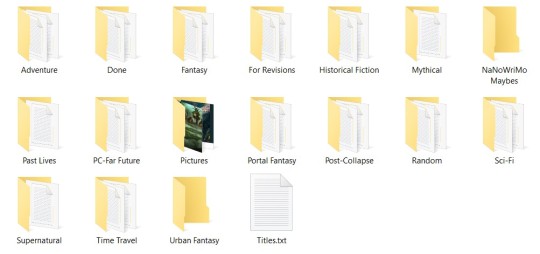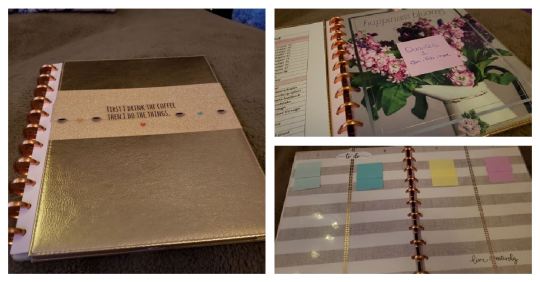#well and on laptop storage but that isn't really a BACKUP if you ask me
Text
Trying to decide if I want to spend money on a decent book bundle deal or not.
On the one hand, lots and lots of books to read for a good price, yay! On the other hand, I want to buy a new microSD and HDD for Wii U purposes very soon, and I've already committed to lunch out with my sister in a couple days, and mom's birthday is this weekend so that's eating out at a restaurant AGAIN. If I spring for the books I'll have to wait a little bit longer to start picking up important things for my Wii U.
#microsd card comes first because that's what you need to hack it then hdd comes a paycheck later#actually i'm going to want TWO decent new HDDs but i'll worry about the second one after everything else#cuz when you use external storage for the wii u itself the wii u will format it to only be usable on that wii u#good to expand your limited internal storage but bad for backups#in the short-term keeping backups on a brand-new microSD should be fine#more reliable backups should be able to wait a few more weeks#i can move 3DS NAND backups there too right now they're only on cloud storage#well and on laptop storage but that isn't really a BACKUP if you ask me#but the wii u full backup won't fit on any of my free cloud storage options so definitely want something external there ASAP#... probably should start paying for more cloud storage at some point too ugh
0 notes
Note
Hello, a bit of a different ask but I'm struggling with my organisation. I have lots of scenes/one-shot/prompt ideas hanging around everywhere (notebooks, phone, pc). Do you have any tips or organisation methods? I know people use Scrivener, but I can't pay for the subscription. I've tried Notion, but I heard it isn't private? It doesn't even have to be a digital program, honestly. I'm at a loss, any advice would be greatly appreciated!
Organizing Story Ideas
Here are my tips for how to organize ideas for different stories...
Choose Your Storage Method
There are lots of different ways you can store ideas, but it may take trying a few before you find one that really works for you. Ultimately, you're looking for something that will let you place the ideas into different categories and potentially sub-categories. Here are some suggestions:
Writing Programs/Apps - There are several beloved writing programs and apps that offer the ability to categorize ideas. Scrivener is certainly one of them, and for the record, it's not subscription-based. As of 8/21 it's a one-time fee of $49. Minor updates are free, but very occasionally there will be a major update that requires a small upgrade fee. Pros: It's easy to type ideas and move things around. Cons: You could lose your ideas if you don't back them up.
Computer File Folders - This is the main method I personally use. In my writing folder on my laptop, I have a folder labeled "plot bunnies" that contains sub-folders for different kinds of ideas. Here's what it looks like:

I don't have sub-folders for sub-categories, but you certainly could if you wanted to. I put each idea into its own notepad file, then save it into the appropriate folder. Pros: It's easy and super organized. I know exactly where to find a certain idea when I need it. Plus, it's easy to add new ideas when I have them. Also, when I'm struggling with an WIP, it's easy to look through other ideas to see if I can incorporate them into the WIP. Cons: You could lose all your ideas if something happens to your laptop, so it's a good idea to have them backed up and make sure you update back ups often.
Notebooks - This is the method I used to use, and TBH it would be a good back up for either of the above methods. I also keep a notebook by my bed for writing down dreams and middle-of-the-night ideas, and I try to transfer them into the appropriate plot bunnies folder every now and then. Look for a multi-subject notebook. If you need sub-categories, you can buy stick-on file tabs to sub-divide. With this method, it's best to let every idea have its own page or half-page. You might also look for one that has built-in pockets where you can quickly store ideas written on post-its, scrap paper, etc. Just make sure to transfer them to their own sections eventually! Pros: Notebooks are inexpensive, easy to store, and easy to grab when you're writing. Cons: If you lose it, you lose your ideas, so this method warrants a back-up method as well.
Three-Ring Binder - This is a variation on the notebook method but one that works especially well if you need a lot of categories and sub-categories. Not only can you use tabbed dividers to create sections, you can use stick-on tabs to create sub-categories as needed. You can also add folders and pockets, or anything else you need. Pros: Binders are relatively inexpensive and come in a variety of sizes. You can fill them with whatever kind of paper works best for noting your ideas. Cons: They're more expensive than notebooks, not as easy to store, and generally work best if you have a lot of empty space on a table or desk so you can work in them. Once again, a backup method is recommended.
Index Cards/Organizer - This method would be especially good if you have a ton of ideas, need a ton of categories, and need lots of sub-categories. Ideally, each idea would go on its own card. Pros: there are a variety of index card storage methods available. You can color code different categories. You can use tabbed index card dividers for categories or make your own using stick-on tabs. Cons: Ideas take longer to find in categories with lots of cards. You need to purchase cards and container. Also need a backup method.
Kanban Board/Binder - Kanban boards are dry erase boards (or bulletin boards) that are divided into sections, each one being its own category. Tasks (or in this case, ideas) are written down on an index card or post-it note, and stuck to (or tacked to) the board in its proper category. You can also use punched, laminated cardstock to create a Kanban Binder. Here's the one I use for writing tasks. I did mine using an old Happy Planner using old Happy Planner covers (since they're already laminated,) but you could also use a three-ring binder.
Looking at the image in the bottom right, each category consists of two laminated pages facing each other. So, this could be "novel ideas" and the columns (sub-categories) are genres like mystery, romance, fantasy, etc. Or, the category could be "fantasy" and the columns could be poems, short stories, novellas, and novels. Whatever works for you! You can Google Kanban boards to see what the board version looks like. Pros: Quick reference, easy to add ideas and remove them when they've been done. Also, it's a versatile/flexible method. Cons: You may need to buy a board or binder and post-it notes/index cards. Also needs a backup method.

Figure Out Your Categories/Sub-Categories
Once you have your method chosen and set up, you'll need to think about how you want to categorize everything and what categories/sub-categories you need. You may even want to do this before you settle on a method. Genres and sub-genres would be one method, writing formats (poetry, fan-fiction, short story, etc.) is another option. You might even choose to categorize by publishing method/intention or how much you like the ideas.
Gather, Sort, and Re-Home
Now it's time to grab your phone, notebooks, and laptop/desktop, gather up all those disparate ideas, sort them into their categories and sub-categories, and put them into their new home!
Choose a Backup Method
Whether you designate a thumb drive and back up your laptop plot bunny folder every week, buy a spiral notebook to jot down new ideas before they go into the primary storage, or take occasional photos of your Kanban board/binder, you definitely want to make sure you have your backup method chosen and use it often. That way, if something happens to the main method, you don't lose all those ideas.
Keep an eye on the comments in case there are more ideas!
•••••••••••••••••••••••••••••••••
Have a writing question? My inbox is always open!
Visit my FAQ
See my Master List of Top Posts
Go to ko-fi.com/wqa to buy me coffee or see my commissions!
#writeblr#writing#writing community#writing tips#writing advice#writers of tumblr#writing organization#writing help#wqaadvice
137 notes
·
View notes